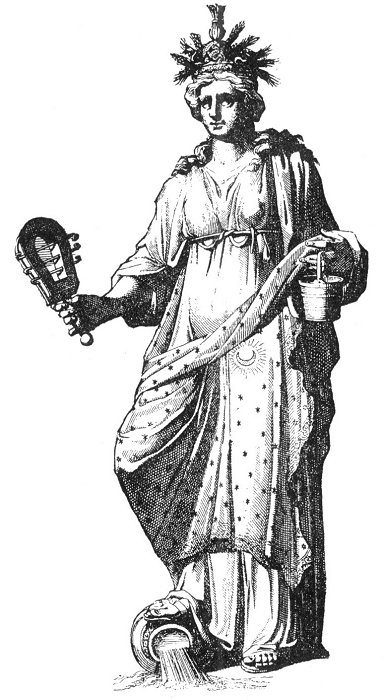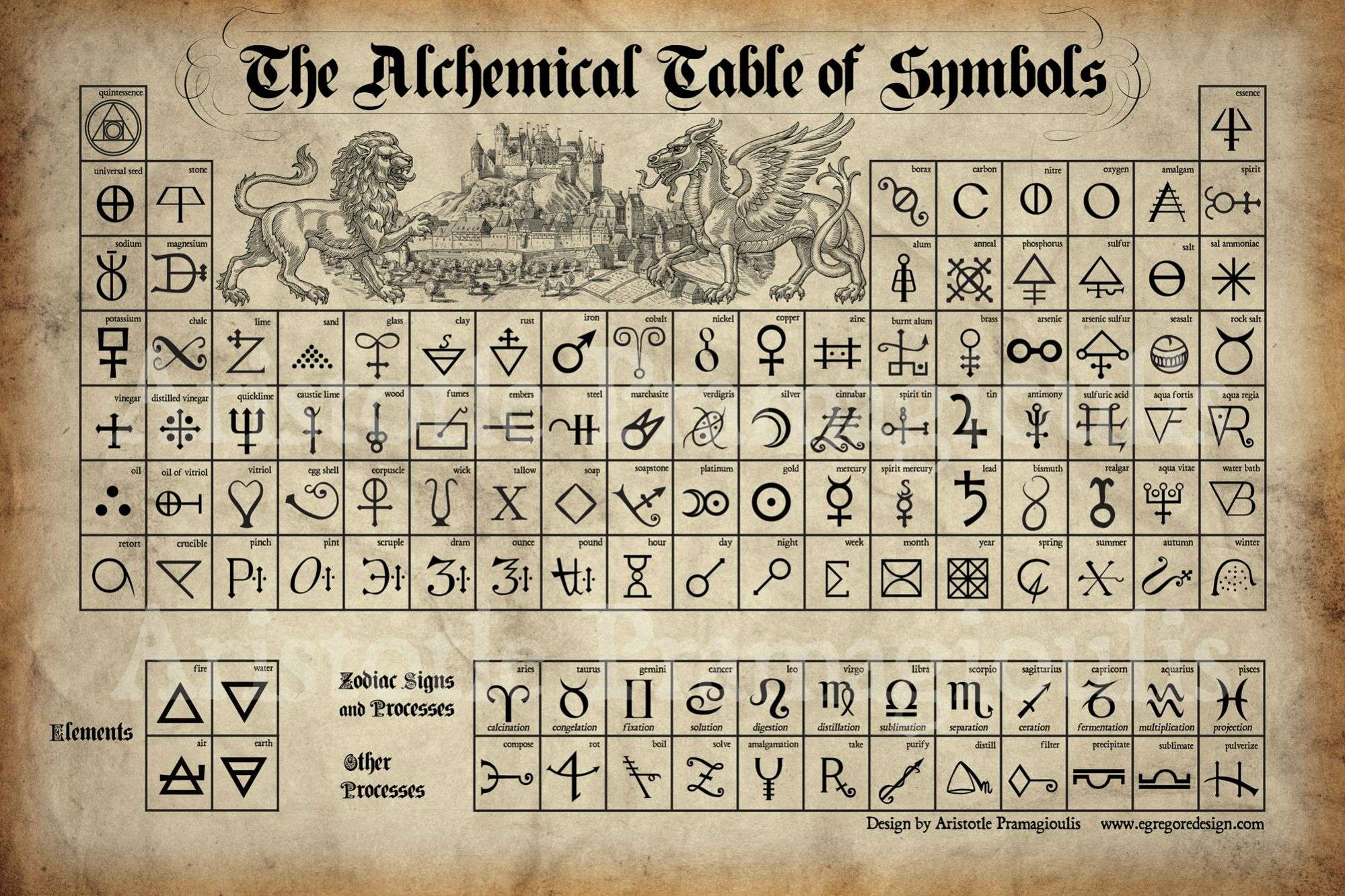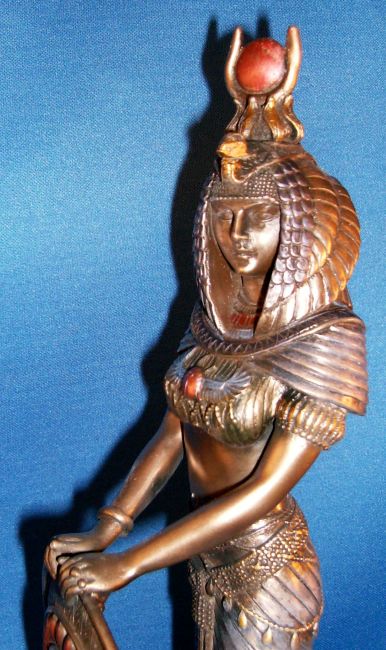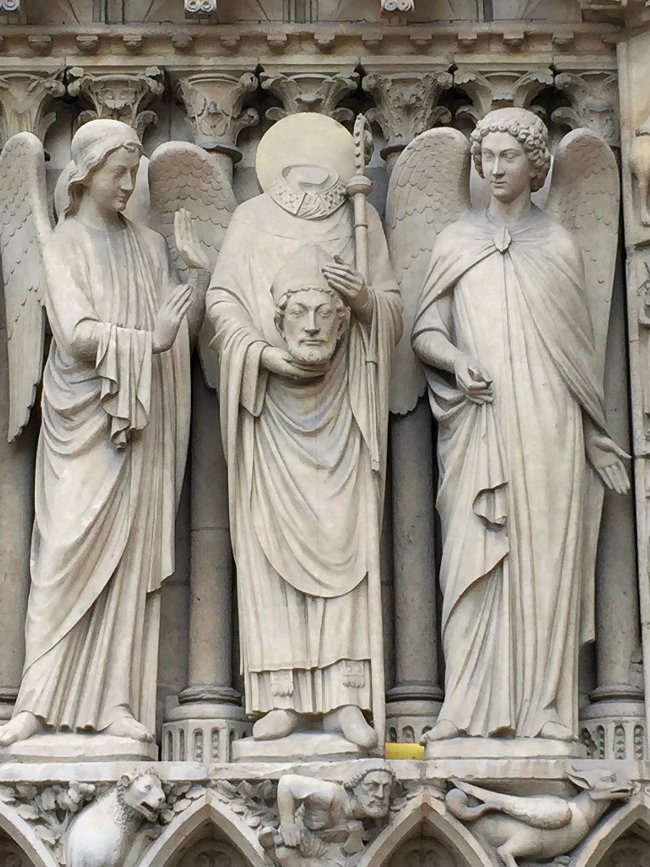If cosmogony be the subject of consideration, the central panel represents the spiritual worlds, the upper panel the intellectual worlds, and the lower panel the material worlds. The central panel may also symbolize the nine invisible worlds, and the creature marked T the physical nature–the footstool of Isis, the Spirit of Universal Life. Considered in the light of alchemy, the central panel contains the metals and the borders the alchemical processes. The figure seated on the throne is the Universal Mercury–the “stone of the wise”; the flaming canopy of the throne above is the Divine Sulphur; and the cube of earth beneath is the elemental salt.
The three triads–or the Paternal Foundation–in the central panel represent the Silent Watchers, the three invisible parts of the nature of man; the two panels on either side are the quaternary lower nature of man. In the central panel are 21 figures. This number is sacred to the sun–which consists of three great powers, each with seven attributes–and by Qabbalistic reduction 21 becomes 3, or the Great Triad.
It will yet be proved that the Table of Isis is directly connected with Egyptian Gnosticism, for in a Gnostic papyrus preserved in the Bodleian Library there is a direct reference to the twelve Fathers or Paternities beneath whom are twelve Fountains. (See Egyptian Magic by S.S.D.D.) That the lower panel represents the underworld is further emphasized by the two gates–the great gate of the East and the great gate of the West–for in the Chaldean theology the sun rises and sets through gates in the underworld, where it wanders during the hours of darkness. As Plato was for thirteen years under the instruction of the Magi Patheneith, Ochoaps, Sechtnouphis, and Etymon of Sebbennithis, his philosophy consequently is permeated with the Chaldean and Egyptian system of triads. The Bembine Table is a diagrammatic exposition of the so-called Platonic philosophy, for in its design is epitomized the entire theory of mystic cosmogony and generation. The most valuable guide to the interpretation of this Table is the Commentaries of Proclus on the Theology of Plato. The Chaldean Oracles of Zoroaster also contains many allusions to the theogonic principles which are demonstrated by the Table.
The Theogony of Hesiod contains the most complete account of the Greek cosmogony myth. Orphic cosmogony has left its impress upon the various forms of philosophy and religion–Greek, Egyptian, and Syrian–which it contacted. Chief of the Orphic symbols was the mundane egg from which Phanes sprang into light. Thomas Taylor considers the Orphic egg to be synonymous with the mixture from bound and infinity mentioned by Plato in the Philebus. The egg is furthermore the third Intelligible Triad and the proper symbol of the Demiurgus, whose auric body is the egg of the inferior universe.
Eusebius, on the authority of Porphyry, declared that the Egyptians acknowledged one intellectual Author or Creator of the world under the name of Cneph and that they worshiped him in a statue of human form and dark blue complexion, holding in his hand a girdle and a scepter, wearing on his head a royal plume, and thrusting forth an egg out of his mouth. (See An Analysis of the Egyptian Mythology) While the Bembine Table is rectangular-shaped, it signifies philosophically the Orphic egg of the universe with its contents. In the esoteric doctrines the supreme individual achievement is the breaking of the Orphic egg, which is equivalent to the return of the spirit to the Nirvana–the absolute condition–of the Oriental mystics.
The New Pantheon by Samuel Boyse contains three plates showing various sections of the Bembine Table. The author, however, makes no important contribution to the knowledge of the subject. In The Mythology and Fables of the Ancients Explained from History, the Abbé Banier devotes a chapter to a consideration of the Mensa Isiaca. After reviewing the conclusions of Montfaucon, Kircher, and Pignorius, he adds: “I am of the opinion that: it was a votive table, which some prince or private person had consecrated to Isis, as an acknowledgment for some benefit which he believed she had conferred upon him.”
Next: Wonders of Antiquity
Index

Moe is the founder of GnosticWarrior.com. He is a father, husband, author, martial arts black belt, and an expert in Gnosticism, the occult, and esotericism.






